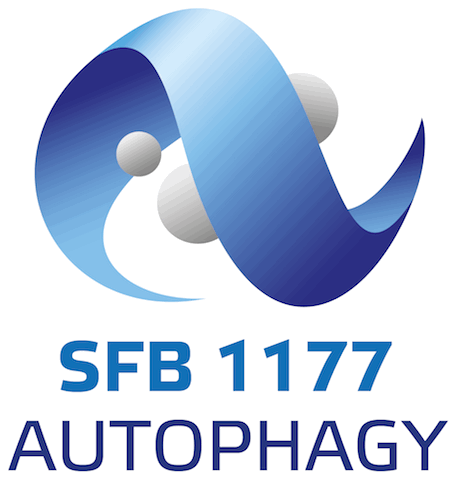D04
Selective autophagy in proteostasis maintenance
Building on expertise and methods established in the 1st funding period, we seek to (i) identify selective autophagy receptor-specific cargo in fed and proteostasis-challenged cells using quantitative proteomics-based autophagosome content profiling, (ii) determine the molecular grammar and machinery that drives autophagic cargo engagement under these conditions, and (iii) develop a LC3B-based reporter in mice to examine physiologically relevant autophagy cargo alterations upon proteostasis challenges in a cell type-specific manner in these animals. Overall, this project will substantially advance our understanding of proteostasis maintenance by selective autophagy pathways.

Proximity proteomics with UBD-containing selective autophagy receptors. (A) Domain structures. LIRs and UBDs (UBA, UBZ, UBAN and ZnF) are colored in red and green, respectively. Other domains are: PB1, Phox and Bem1p; ZZ, ZZ-type zinc finger; Dark grey box, Keap1-interacting region; SKIP carboxyl homology (SKICH) domain; CC, coiled-coil; Light grey box, galectin-8 binding region; C2 domain, TRAF6 binding site, PEST sequence. (B) Scheme of the receptor-based proximity proteomics strategy.
Principal Investigators
Prof. Dr. christian behrends
Munich Cluster for Systems Neurology (SyNergy)
Ludwig-Maximilians-Universität (LMU) München
Feodor-Lynen Strasse 17
81377 München
Germany
Office: +49 (0)89 4400-46509
Christian.Behrends@mail03.med.uni-muenchen.de
